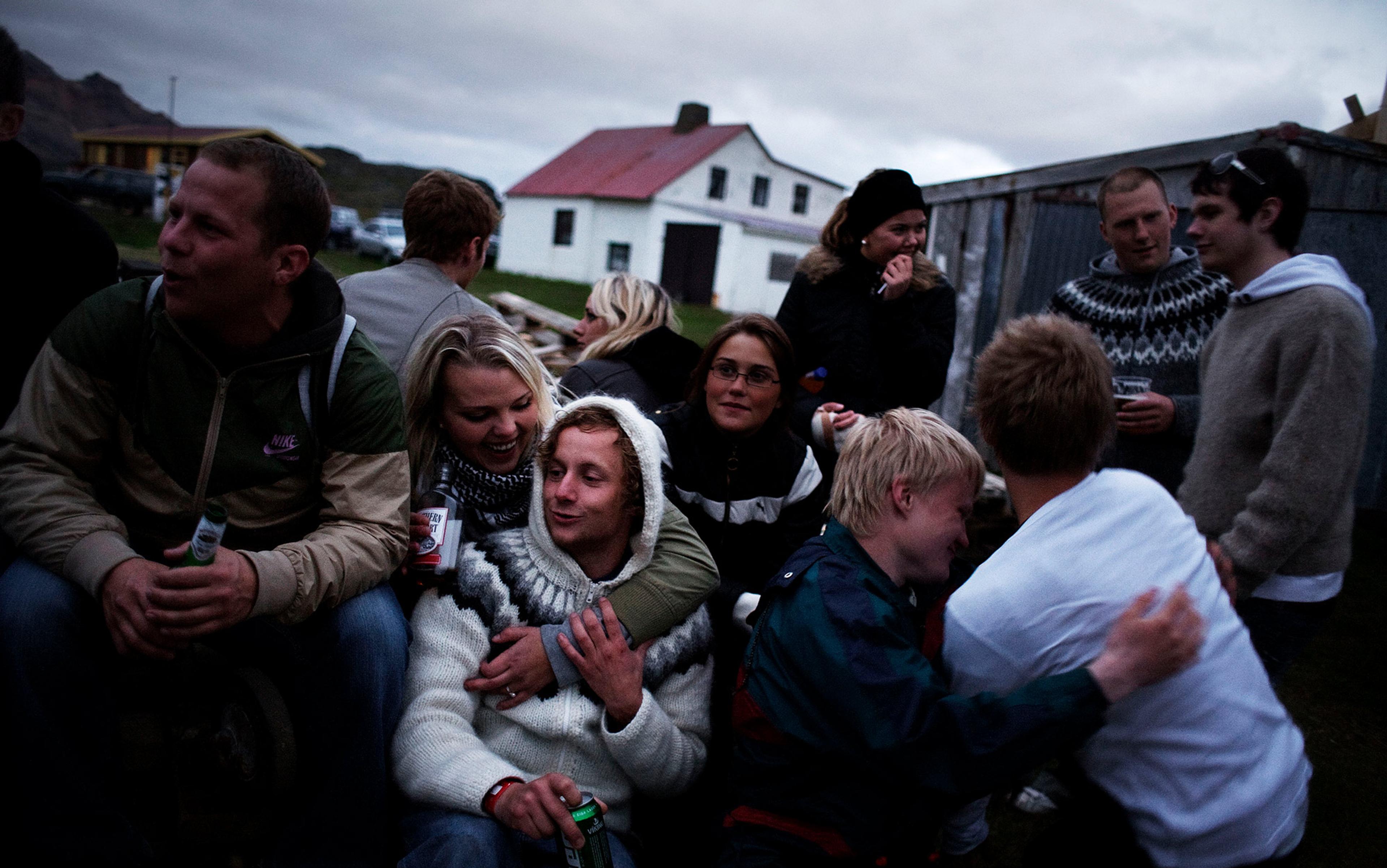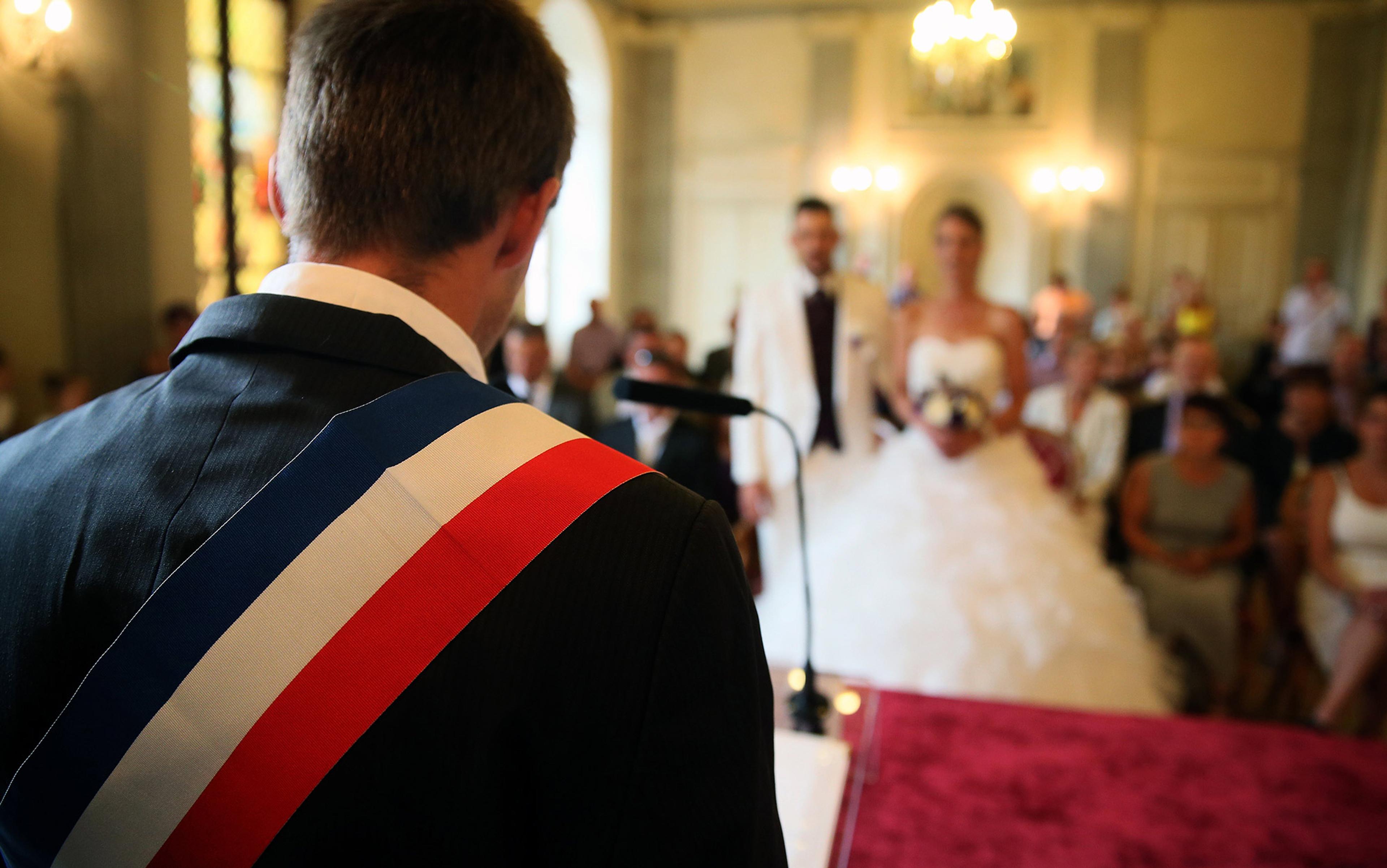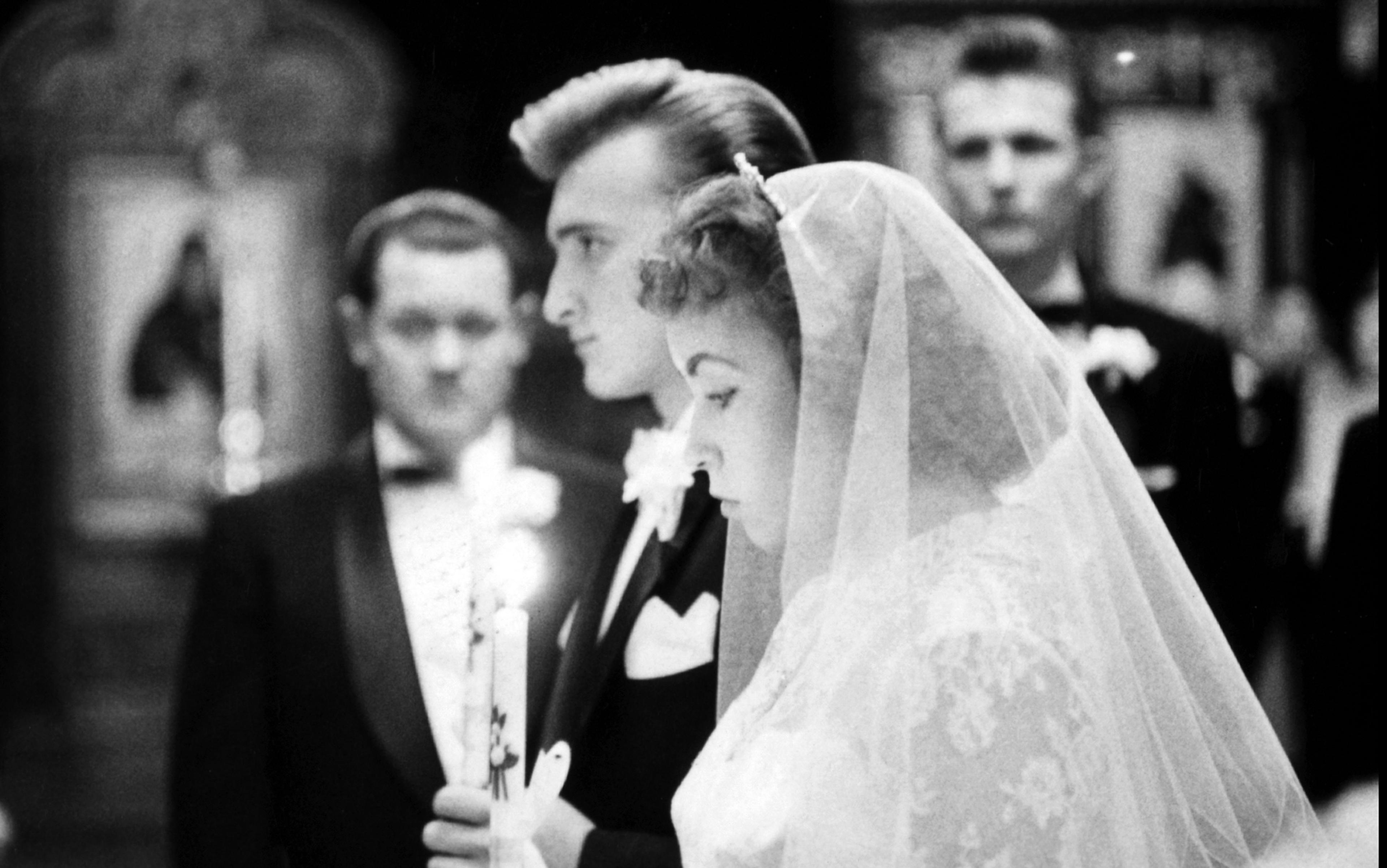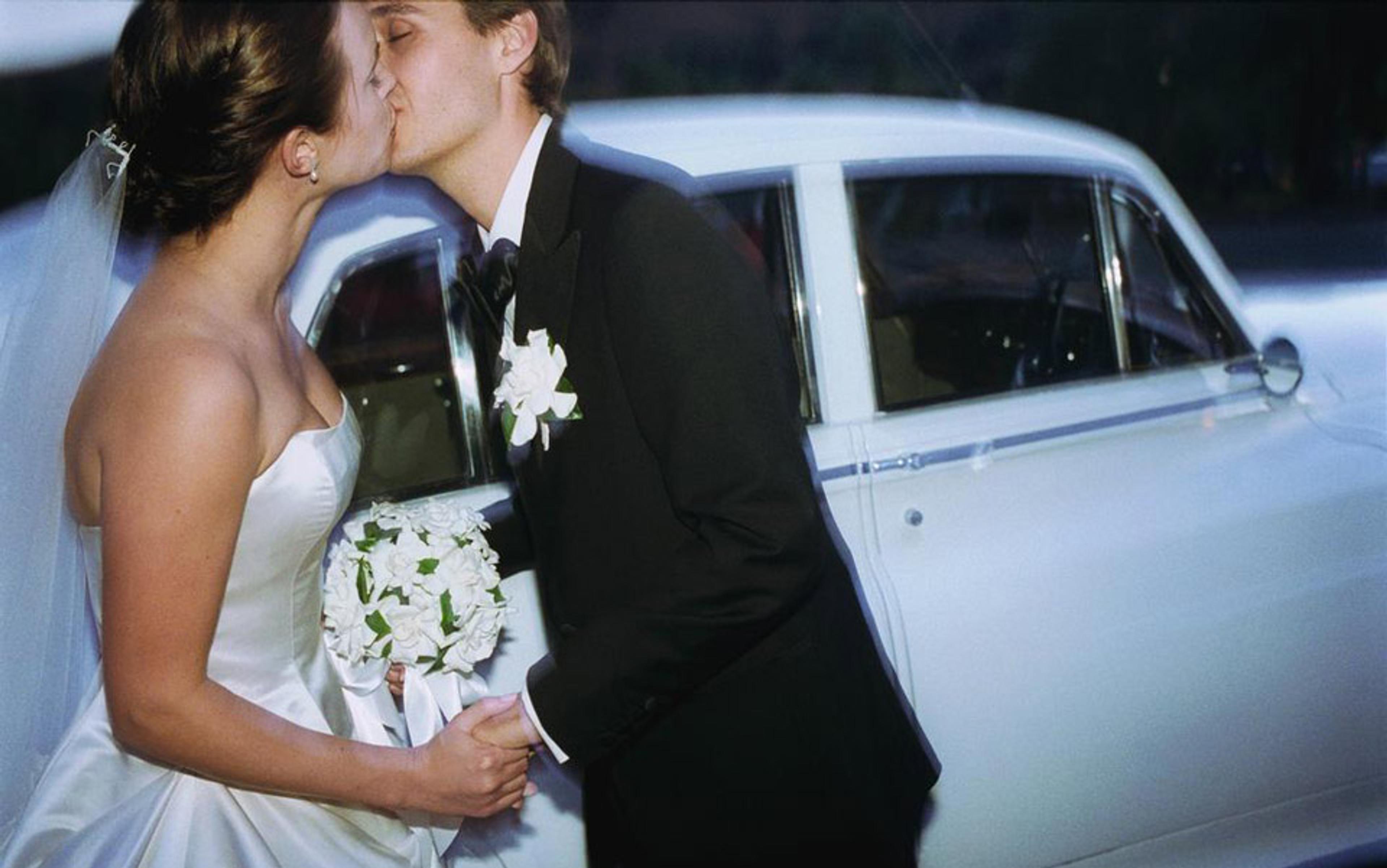At 17, John Humphrey Noyes thought a lot about women. An awkward teenager with a gangly neck and slouching shoulders, he fretted over how good looks were the key to success, especially when pursuing women. And he was shy. ‘So unreasonable and excessive is my bashfulness,’ he wrote in his journal, ‘that I fully believe that I could face a battery of cannon with less trepidation than I could a room full of ladies with whom I was unacquainted.’ Little did he know that he would go on to have sex with dozens of women, fathering children with at least nine in a ten-year period.
Noyes was born in 1811. His father was a Congressman for Vermont. His mother worked to instil in her son a religious reverence, hoping that he would become a ‘minister of the Everlasting Gospel’. In 1831, her wish seemed likely to come true. Noyes, then 20, announced that he would devote himself to the service of God’s truth, and entered a seminary in Andover, Massachusetts. Rather than accepting his teachers’ doctrine, however, he became consumed with the revivalist furore sweeping the northeast like a prairie fire. He left Andover for Yale University and started an uproar when he began preaching Perfectionism, the heretical notion that a religious life must be free of sin. Argumentative and charismatic, Noyes became a local celebrity and attracted small crowds of supporters, opponents and gawkers.
It was around this time that Noyes met Abigail Merwin. He was 22; she was 30. It’s hard to find details about Merwin, other than that she was smart, beautiful and modest, and had dark-grey eyes. Many of Noyes’s descriptions of her are saturated with ecstatic religious imagery. During a period when he stopped eating and sleeping and instead wandered manic through the streets of lower Manhattan, he envisioned her ‘standing, as it were, on the pinnacle of the universe, in the glory of an angel’ (although, in his mania, he wondered whether she was actually the devil incarnate).
Merwin was Noyes’s first follower, and he loved her. In his Confessions of Religious Experience (1849), he admitted that ‘she was undoubtedly the person to whom I was attached more than any other person on earth’. He was drawn to her beauty, modesty and boldness but, just as importantly, he drew inspiration from her company. ‘Abigail Merwin was my first companion in the faith of holiness,’ he wrote. ‘It was natural that I should regard her with peculiar interest and confidence.’
Noyes’s instability eventually scared off Merwin. After his manic spell in New York, she deserted him and Perfectionism. Her father later told Noyes to keep away. Yet when Merwin announced her engagement to a man named Merit Platt, Noyes sent her a letter. ‘I loved you as I never loved another,’ he declared, confessing that ‘the thought of marriage was unavoidable’. Sure, she was engaged, but that didn’t bother Noyes. He was convinced that they were joined in divine matrimony: ‘God shall make you know that he has joined us in an immortal marriage, and that what God hath joined together man can not put asunder.’
Merwin and her new husband moved to Ithaca. Noyes followed them, but Merwin refused to acknowledge him. It was then that Noyes began to develop his doctrine of free love, which, conveniently enough, would justify his having a relationship with Merwin. He spelled out the ideas in a letter to his friend David Harrison. Harrison would eventually share the letter, and it would appear in newspapers up and down the Atlantic Coast. It would make Noyes famous and despised. Its final paragraph was the most controversial:
When the will of God is done on earth, as it is in heaven, there will be no marriage. The marriage supper of the Lamb is a feast at which every dish is free to every guest. Exclusiveness, jealousy, quarrelling, have no place there … I call a certain woman my wife – she is yours, she is Christ’s, and in him she is bride of all saints. She is dear in the hand of a stranger, and according to my promise to her I rejoice. My claim upon her cuts directly across the marriage covenant of this world, and God knows the end.
It was an impossible-sounding scheme that attacked a cherished institution. And it rubbed up against the sensitivities of god-fearing New Englanders. Nevertheless, Noyes somehow made it happen.
Today, Noyes is best known for founding the Oneida Community, a religious utopia that, among other ambitions, eradicated traditional marriage. Any man could ask any woman to have sex; each woman could in turn reject any man. The nuclear family disappeared. Couples who developed romantic relationships were criticised, and both property and childcare were communal. The community was so resistant to forms of sticky love that mothers and fathers were condemned for showing special affection towards their children.
The Oneida experiment is one in a long line of anti-marriage crusades stretching from 2nd-century North Africa to 20th-century Israel. And like all of them, it failed. After 30 years of enforcement, 30 years of criticism and religious indoctrination, the impulse for special relationships was too strong to control. Younger members revolted. Some developed relationships in secret; others quit the community and married outside. On 9 June 1879, one resident wrote: ‘The disaffection continues and spreads … There is a great deal of uneasiness and anxiety among the thinking classes. All are waiting for something decisive to happen.’
Noyes’s failure to destroy marriage demonstrates just how resilient the institution is. It suggests there’s something deeply human that inspires us to create and participate in marriage. Yet it’s this – the primality of the institution, its inexorable tendency to exist – that makes the current historical moment so puzzling. Around the world, marriage rates are dropping. Children are born out of wedlock at an unprecedented frequency. Reviewing these trends, one commentator warned that ‘the marriage apocalypse may be coming’. Are they right? Is marriage truly doomed? And if it is, why? What’s killing the world’s oldest institution?
In 2002, Duncan White of Relate – the largest counselling organisation in the UK – was quoted by the Daily Mail as proclaiming that marriage ‘will be extinct in 30 years’. While that still leaves 12 years and counting, it resonates with current trends worldwide. For the first time in US history, a majority of young adults are unmarried. Last year, the UK Office for National Statistics reported that heterosexual marriages ‘remain at historical lows’. And the rate of children born outside of marriage has exploded in the developed world, exceeding 50 per cent in the Scandinavian countries and many others. As the historian Stephanie Coontz concluded, we are ‘in the middle of a world-historic transformation of marriage and family life’.
The apparent collapse of marriage is staggering because marriage is ubiquitous. Sure, there are (or were) places where women marry sets of brothers, where people can marry ghosts or cross-cousins, where marriage is a hot glue gun that fastens families together in enduring alliances. Sure, in some places a marriage is inaugurated with dancing and feasting, the groom festooned like a prince and riding triumphant atop a horse, his family revelling like freed inmates before him – and in other places with no fanfare at all, a man shares a plate with a woman and now everyone knows they’re together. Sure, marriage is a chameleon that adapts to the norms and expectations surrounding it. Nevertheless, as the anthropologist George Murdock concluded in his treatise Social Structure (1949), no society ‘has succeeded in finding an adequate substitute for the nuclear family’.
But Murdock didn’t know about the Mosuo of southwestern China. Situated more than a mile and a half above sea level, on the lush shores of a turquoise lake snuggled among evergreen god-mountains that stretch higher than Mount Fuji, the Mosuo have become one of anthropology’s most well-known case studies.
The Mosuo are famous for not having marriage. Instead, they have tisese, literally ‘walking back and forth’. In a tisese relationship, a man and a woman live and eat in their own households (there aren’t descriptions of non-heterosexual tisese). When the fancy strikes, the man visits the woman and, assuming she consents, spends the night and leaves in the morning. Although many tisese relationships are long-term, there’s no obligation between partners, no formal ceremony that starts or ends the relationship and, in principle, the partners can have as many tisese relationships as they can manage. It’s similar to casual dating, except that if a woman gets pregnant, the father has few obligations to the child.
Humans are biologically prepared to pair-bond and it appears to be a solution for raising children
In actuality, the Mosuo have marriage too. They’ve had it since anthropologists first arrived, and the practice looks strikingly like marriage in the contemporary West. They call it zhi-chi-ha-dzi, which means ‘drinking liquor and eating meal’ and refers to festivities of spirits and beefsteak that accompany a wedding ceremony. Still, married people are – or at least were – a minority in Mosuo society. When Chinese anthropologists first conducted surveys of more than 1,700 Mosuo adults in 1956, they found that 74 per cent practiced tisese, while fewer than 10 per cent were formally married. Even after wealth, tourism, and acculturation have transformed Mosuo life, marriage remains secondary. When, in 2008, the anthropologist Siobhan Mattison surveyed Mosuo communities frequented by tourists, she found that 13 per cent of adults were married while 23 per cent were in tisese relationships. The other 64 per cent either were single or cohabited with their partners. Marriage has been less conspicuous among the Mosuo than perhaps in any other society on Earth.
To understand why marriage was so weak among the Mosuo, we first need to be clear on what marriage is. It consists of two parts. First is the pair-bond, a longterm relationship in which two people typically have sex, live together, cooperate economically, and produce and rear babies. Humans are biologically prepared to pair-bond and, from the way that we organise the relationship, it appears to be a solution for raising children. This doesn’t mean that humans engage in only one pair-bond at a time, nor does it mean that deviations from typical pair-bonds are wrong or defective. In Indonesia, Minangkabau couples didn’t live together. In West Africa, Yoruba couples presumably didn’t pool their resources into a common household fund. And countless couples, in societies everywhere, don’t procreate or rear children. Instead, my point is that humans are inclined to engage in longterm relationships, and that these provide the basis for marriage.
But a pair-bond alone doesn’t qualify as marriage. It needs to be institutionalised, too. The relationship needs to be wrapped in privileges and responsibilities, with socially recognised rules such as ‘Neither partner can have sex outside the relationship,’ or ‘Any child born from the union is a member of the mother’s group.’ To make it clear when a couple enters this institutionalised status, societies pronounce marriages with unambiguous actions: for example, saying ‘I do’ or smashing a glass in front of everyone.
Both pillars of marriage are weak among the Mosuo. Not only are tisese relationships free of institutional formalities, but they lack the behaviours common to human pair-bonds. The couple have sex, yes, and sometimes even produce babies, but they don’t live together, and their economic cooperation is meagre compared with the resource-pooling characteristic of most marriages.
Why are the Mosuo such outliers? One answer comes from Jiaama, a Mosuo woman who, in 1963, told her life story to Chinese anthropologists. Jiaama was the youngest of 10 siblings and the only girl among them. For that reason, Jiaama explained, ‘my mother pampered me from the very beginning. She did not let me do any heavy or dirty work but ordered my brothers to do them.’
Jiaama’s first tisese relationship came when she was 14. At first, she was nervous about moving into her own room and accepting visitors. ‘Some girls teased me and said: “Jiaama, are you afraid of living in a room by yourself?” I said: ‘Somewhat’ … At the time I thought to myself, a little girl like me, who was going to make me his axiao [tisese partner]?’
Tisese turned out to be smooth and easy, so much so that her first partner proposed marriage. ‘It’s so good to be axiao to each other,’ Jiaama replied to him. ‘Don’t ever mention again that you want to take me [as] your wife. Otherwise my mother and brothers would drive you away.’
Jiaama took on a second partner, although the relationship ended when she became pregnant. After she gave birth, she took on three more partners – one of them was Liangzhe Bubu, a man she described as youthful, honest and good-looking. When Liangzhe Bubu wanted to start a relationship with Jiaama, he sent over salt, a coat, a skirt, tea leaves and a pair of shoes. They saw each other for two years, at which point she gave birth to her second child. Fatherhood compelled Liangzhe Bubu to propose:
Everyone said the baby resembled Liangzhe Bubu. He was also very proud and said he would like to marry into our household to be a son-in-law. I told him: ‘I have nine brothers. Who needs you as a son-in-law? If you want to be axiao with me, let’s just keep it that way. Never be carried away by whims again.’ Of course, he was unhappy at those words. From then on, he came less and less frequently.
Jiaama’s reply to Liangzhe Bubu is key. Who needs a husband when you have nine brothers? In most societies, this question doesn’t come up, because brothers are busy taking care of their own children. But Mosuo social structure is peculiar. Rather than moving in with their sexual partners, men and women often stay in their mother’s household. Adult brothers and sisters end up living together, and as a result, a woman’s siblings can help raise her children. Of course, there’s variation in living arrangements. Mosuo family life has been transforming for decades, and there were even patrilineal villages when anthropologists first came in the 1950s (as expected, marriage was stronger in these villages). Still, the basic lesson holds: when women rely less on their sexual partners, pair-bonds become weaker.
People still couple up, still live together, have sex, rear babies, pool resources. They’re just not getting married
Is something similar going on worldwide? Is marriage collapsing because empowered women have less need for pair-bonds?
At first blush, the answer seems to be yes. Many writers trace the decline of marriage to the growing ease of single parenthood. Given Iceland’s staggering statistics – more than 70 per cent of births in 2018 were outside of marriage – it has become a popular focus. Writing for The Atlantic in 2016, Emily Epstein pointed out that, in Iceland: ‘A combination of generous social programs and a secular society have all but made nuptials obsolete – while giving rise to a unique culture of independent motherhood … Living in a small community means relatives are often close by and can pitch in on childcare.’
The political scientist Janet Johnson made a similar observation in The New Yorker in 2015. Writing about ‘the distinctive culture of single motherhood in Iceland’, she noted that ‘Icelandic parents receive extensive social benefits, including nine months of paid leave to be shared between parents and affordable preschools. Most people also have networks of relatives available nearby to pick up the slack.’ Just as Mosuo women have their brothers and sisters, Western women have family, friends and governmental assistance.
Single motherhood might indeed be easier today than before. But all these comments miss the point. The major trend isn’t a rise in single parenthood; it’s a decline in the formality of marriage. People still couple up. They still live together. They still have sex, rear babies, and pool resources. They’re just not getting married. They’re not subjecting their relationships to the bundle of rights and responsibilities that governments call ‘marriage’. As the Icelandic demographer Ari Klængur Jónsson clarified in his report ‘A Nation of Bastards?’ (2019), the vast majority of nonmarital births in Iceland are not to single mothers; they’re to cohabiting couples.
For demographers, the rise in cohabitation is at the centre of the marriage revolution. The numbers are staggering. In the US, the number of heterosexual cohabiting couples rose from 1.6 million in 1980 to 8.5 million in 2018. In Norway, a third of respondents in 1984 thought it was OK for an unmarried couple to live with children; by 2007, more than four in five approved of cohabitation without a plan to marry. ‘Unprecedented changes in the timing, duration, and sequencing of intimate coresidential relationships have made the study of marriage far more complex today than in the past,’ begins a recent scholarly review from Cornell University in New York. ‘The rise in cohabitation is the major reason why.’
To explain the decline of marriage, we shouldn’t look at single parenthood and weakening pair-bonds. We need to look at cohabitation.
If you want to learn about cohabitation, you can’t do much better than to ask Brienna Perelli-Harris. A demographer at the University of Southampton in the UK, Perelli-Harris has spent more than 20 years studying changes in childbearing and partnerships. Like many demographers, she began her career studying a single place – post-Soviet Russia – but given that family structure is changing worldwide, she saw the need for a comparative approach. So, she called together demographers, anthropologists and sociologists and started the Nonmarital Childbearing Network.
This network is an international group of scholars who try to understand what’s universal about family change and what’s specific to particular countries. They started off by studying survey data, but, as Perelli-Harris points out, ‘the survey data is very shallow. It doesn’t tell you a lot about the explanations – the reasons people are behaving as they are – and how these trends differ across countries.’ So, they took a different approach: focus groups. They invited in six to eight people at a time, and asked them questions such as: ‘Should people get married if they have children?’ and ‘In 50 years, do you think people will still get married?’ By the time they published their results in 2014, they had run 79 focus groups with almost 600 participants across eight European countries and in Australia.
The countries spanned the continuum of partnership arrangements: from Italy, where previous surveys showed that 14 per cent of respondents had cohabited, to Norway, where 80 per cent of respondents had done so. Despite that variation, a common story emerged. Almost everywhere, people agreed that marriage requires greater commitment than cohabitation. You make a promise before friends and families and accept that, if you back out, you’ll face the administrative hellhole that is divorce. As one Russian participant explained: ‘I can much more easily leave a cohabiting union than a marriage.’ With marriage, ‘there is something like a lock there.’
People accept the commitment of marriage, because getting married provides benefits. You get to live together and, if you so desire, raise babies. You feel more secure because your partner commits too. And you gain legal privileges, including some that are essential for making a living. One participant remembered how, in former East Germany, only married couples were allowed to take out loans. ‘There was no other way,’ he said.
He contrasted then with now. ‘Today,’ he said, as a single person, ‘I go into a furniture store and buy my whole apartment on loan.’ His comment reflects a broader societal trend: marriage is losing its monopoly over benefits. This is partly because governments are granting single people privileges once limited to married couples. Yet the biggest contributor seems to be the growing acceptance of cohabitation. As sexual norms loosen, unmarried partners can live together. They can raise babies and build a life together. And they can do so without signing over their life in an eternal marriage contract. A Dutch participant summed up the appeal of cohabitation over marriage when he said: ‘It’s like a subscription. You can easily quit it and move on with your life.’
‘We married after 11 years. We have survived the period with young children, so this is to celebrate love’
The difference between marriage and cohabitation dwindles further as governments recognise cohabiting unions. In the eyes of the Dutch government, registered cohabiters are almost equivalent to their married counterparts. Sweden and France aren’t far behind. This is good for cohabiting couples, who can now adopt children and jointly submit taxes, but it has a paradoxical result: cohabitation is becoming a new form of marriage. Remember that marriage is an institutionalised pair-bond. It’s sex + economics + coresidence, wrapped up in duties and privileges. As governments allow cohabiters to co-insure nonworking partners, or as they demand that they pay spousal support after breaking up, they refashion a new, less committed form of marriage.
Despite these trends, most people want to get formally married eventually. According to a recent survey from the Pew Research Center in the US, around 70 per cent of respondents said that marriage is either essential or important to living a fulfilling life. Even among those cohabitation-enthusiastic Norwegians, marriage is the ideal. It’s just that its meaning is changing. As the practical shell of marriage dissolves, a core of commitment remains. Marriage is becoming a way for people who feel strongly about each other to solidify and celebrate their relationship. It’s becoming what the US demographer Andrew Cherlin in 2018 called a ‘capstone’: a symbol of an actualised life and partnership. In Austria, Belgium, Bulgaria, Estonia, France, Georgia, Norway and Sweden, the median age of marriage is at least three years after the median age at first childbirth. ‘We married after 11 years,’ explained a Norwegian participant in Perelli-Harris’s research. ‘We have survived the period with young children, so this is to celebrate love.’
The same idea comes up in conversations around same-sex marriage. In 2006, the US sociologist Katrina Kimport interviewed gay and lesbian people who’d married when San Francisco briefly legalised same-sex marriage two years earlier. Some respondents talked about the legal implications; others saw marriage as a political act. But many focused on love. A woman introduced as Addy described her marriage to another participant called Julie. Addy and Julie are both biracial but come from different backgrounds. Addy grew up in foster care in low-income households; Julie was raised upper-middle class. Addy is white and Native American; Julie is white and Middle Eastern. For them, Addy explained, marriage was a consummation of love that transcended their distinct histories. ‘It’s about the love,’ she said. ‘It’s not about class. It’s not about race. It’s not about any of that kind of stuff. It’s just about love and two people doing what you should be able to do, and that’s love each other.’
When the gay rights organisation Equality California ran a television ad campaign in 2007-8, they asked viewers: ‘What if you couldn’t marry the person you love?’ For them, and presumably for the Californians watching, marriage wasn’t about being an adult, having children or getting legal protections. It was about love.
Is a marriage apocalypse coming? Looking at current trends, it’s already here. Modernity, as destructive and unexpected as an asteroid, has ravaged societal norms. The hegemony of formal marriage over relationships is ending. Yet, like the dinosaurs evolving into birds, formal marriage persists, just transformed and more marginal. In its formal place, a zoo of new relationships is appearing. There’s casual cohabitation for couples testing the waters. There are registered unions for those unwilling to sign the big contract. And there’s a fieldguide of lesser-known arrangements, from living apart together (when longterm partners keep separate addresses) to kitchen-table polyamory (when a tangle of nonmonogamous partners are intimate enough to have breakfast together).
Marriage is weakening. It’s diversifying. But it won’t disappear any time soon.






